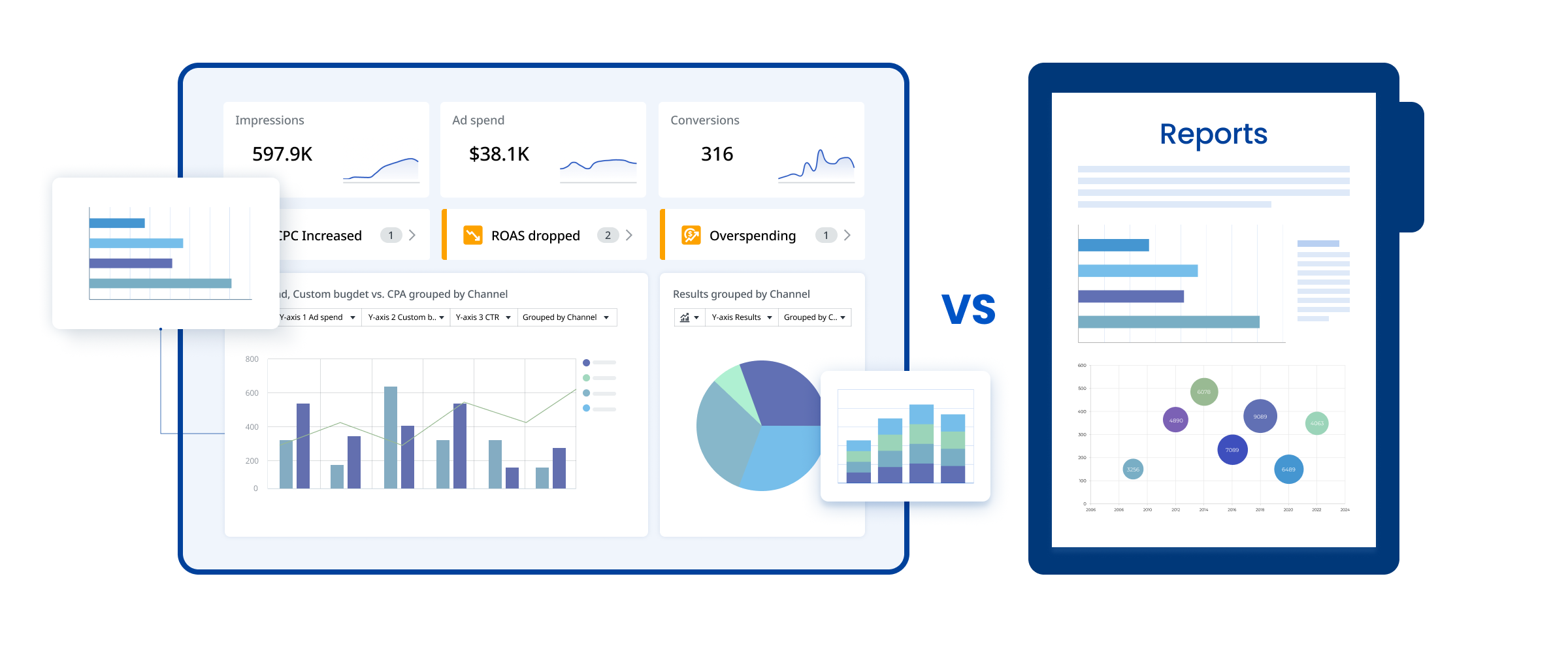
1. Dashboards are interactive, reports are static.
On an interactive dashboard, you can see performance changes in real-time, experiment with widgets and graph types, and adjust the metrics and trends you want to visualize. Once you’re satisfied with your dashboard, you can then download the data as a PDF or CSV report, but they will no longer be customizable.
2. Dashboards are comprehensive, reports are focused.
Dashboards provide a wide range of information to showcase an overview of your marketing performance. In contrast, reports zoom in on a specific narrative depending on who it’s for. For instance, a report for a CFO would focus on sales performance, while one for a CMO would focus on an in-depth analysis of channels and creatives.
3. Dashboards are for internal teams, reports are for executives and clients.
Because dashboards are interactive and comprehensive, they’re usually for internal teams to keep track of insights and make day-to-day decisions. When the time comes for monthly or quarterly reports, teams put together reports based on the dashboard data for executives and other external stakeholders (e.g. clients).
On Adriel’s dashboard, you can get the best of both worlds. Create different views for different stakeholders on an interactive dashboard and generate white-labeled reports in just a few clicks.

















